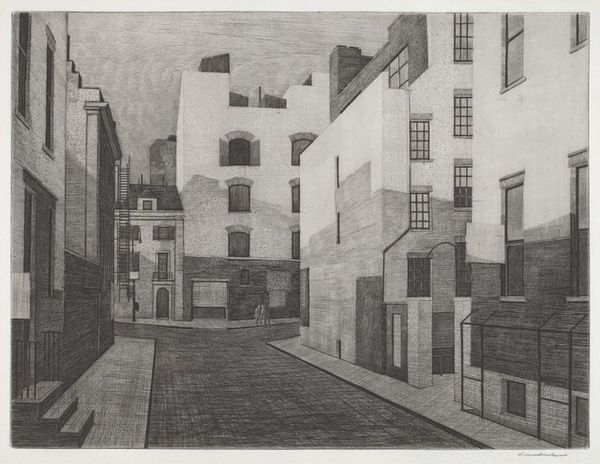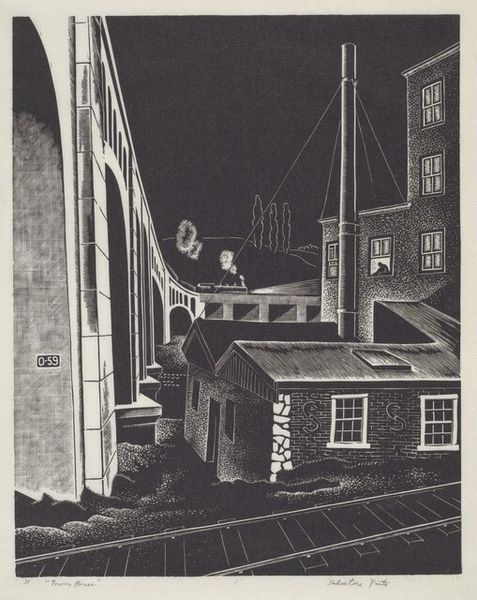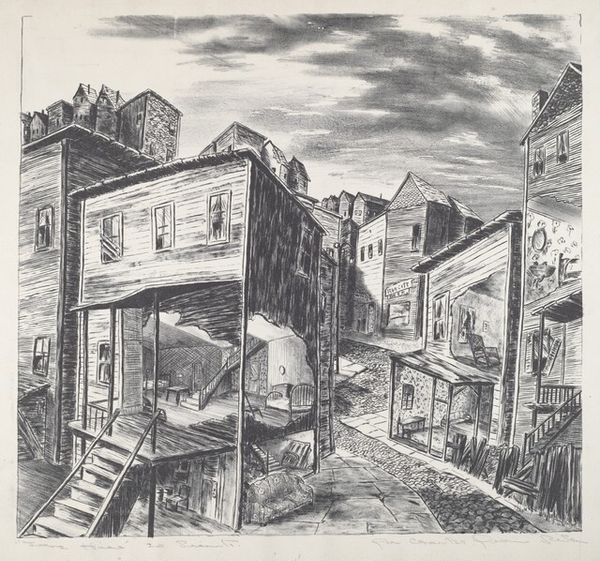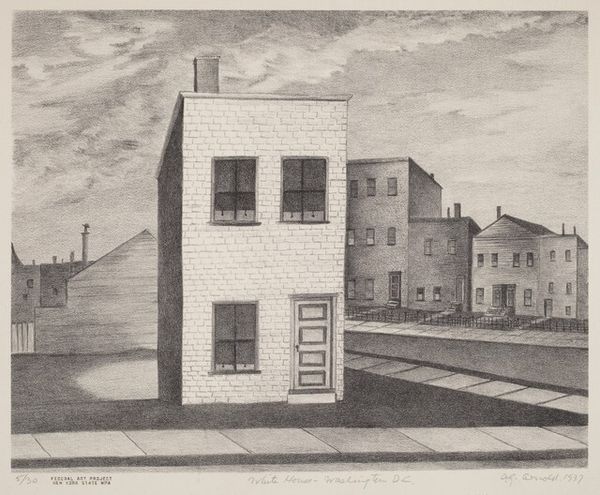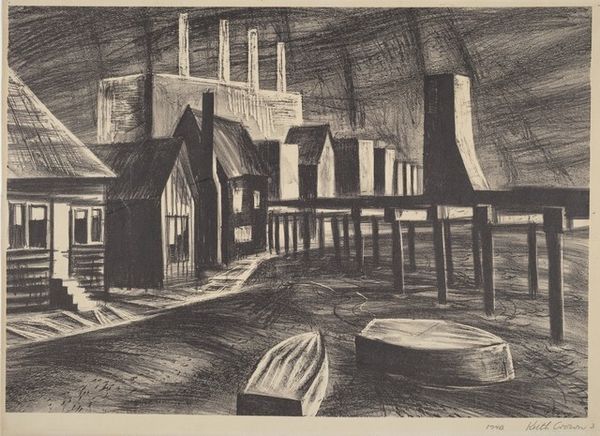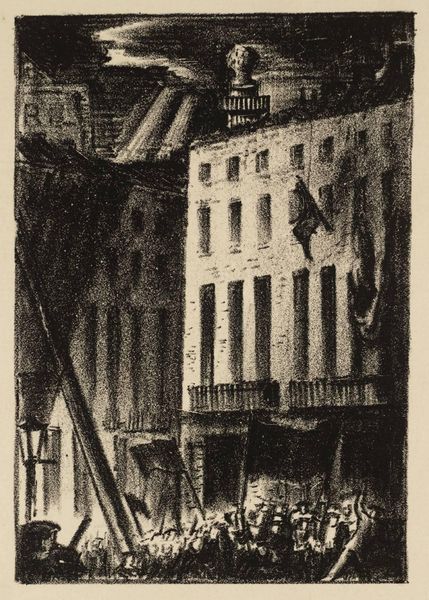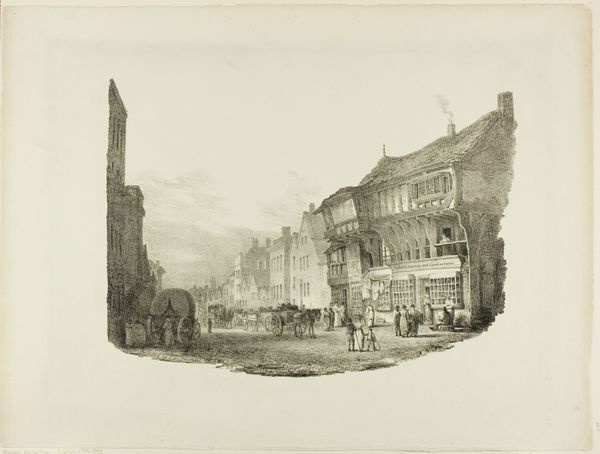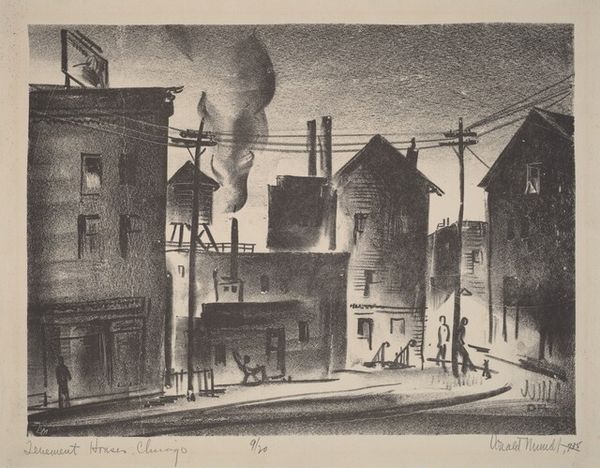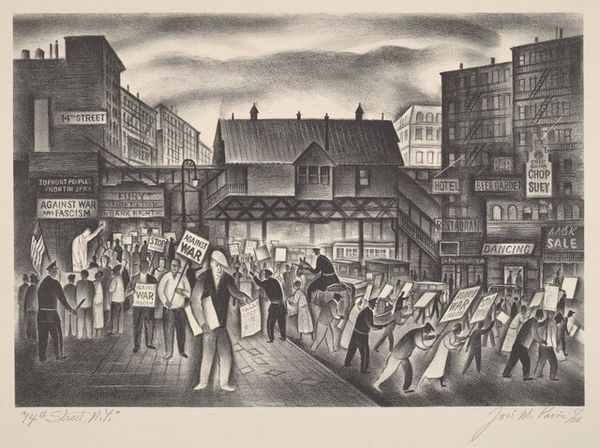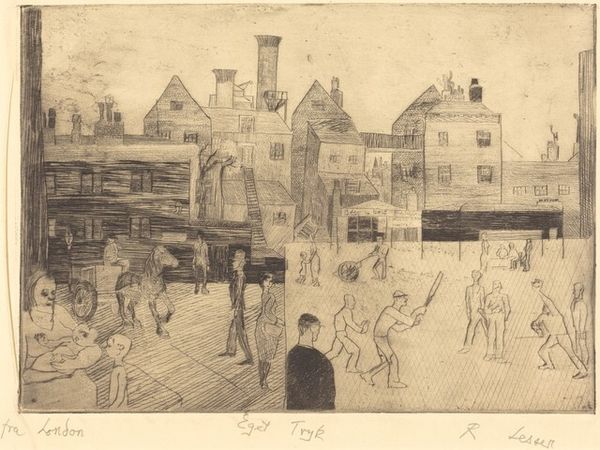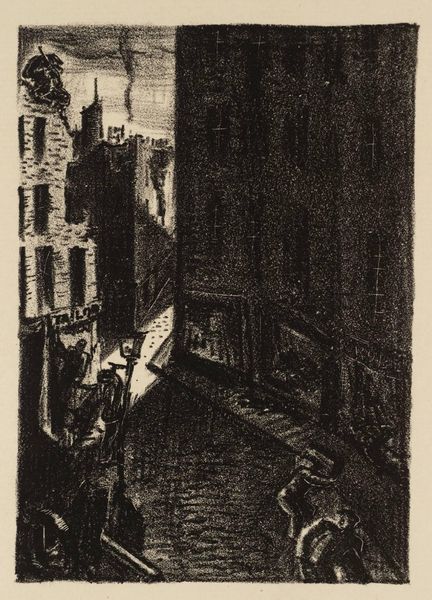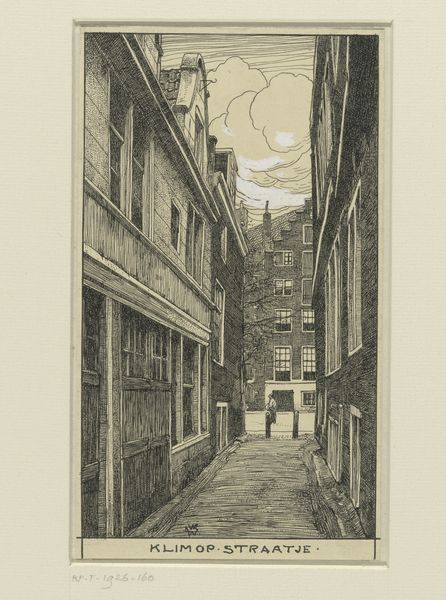
graphic-art, print, etching
#
graphic-art
# print
#
etching
#
cityscape
#
realism
#
monochrome
Dimensions: plate: 26.51 × 35.4 cm (10 7/16 × 13 15/16 in.) sheet: 38.58 × 22.07 cm (15 3/16 × 8 11/16 in.)
Copyright: National Gallery of Art: CC0 1.0
Editor: Right, let's talk about Armin Landeck's "One Way Street," created in 1950 using etching. It's such a stark monochrome image; it really evokes a sense of urban loneliness. What is your interpretation of this piece? Curator: It’s interesting that you pick up on the feeling of loneliness. Considering this etching in its historical context, we see a representation of post-war urban America. Think about the mass migrations to cities, the rapid development. How do you see Landeck portraying these shifts? Editor: Well, it's a pretty gritty portrayal, almost bleak. I noticed the "One Way" sign; is it about the restricted possibilities of urban life? Curator: Possibly. Etchings at this time became ways for the urban artists to express a viewpoint of their cities, which are so built up around the economic struggles that people faced after the war. Think about how the placement of the sign interacts with the urban environment – is it guiding us, warning us, or something else entirely? Editor: That's a great point; it could be about direction, or misdirection, in this changing social landscape. Also, the towering buildings and the fading advertisements hint at lost promises, I think. Curator: Exactly. Consider also the lack of people, save for a solitary figure almost lost in the frame. The artist used this method to highlight that feeling. It serves as a lens through which we can examine social isolation and the feeling of anonymity within an expanding urban world. Editor: That gives me a new perspective, examining Landeck’s focus on representing cities with social issues and population shifts. I guess it's a reminder that art reflects more than just what's visible. Curator: Precisely! Understanding the social and historical backdrop enriches our appreciation and provides layers of significance beyond initial impressions. The artwork is a record of the society it was extracted from.
Comments
No comments
Be the first to comment and join the conversation on the ultimate creative platform.
